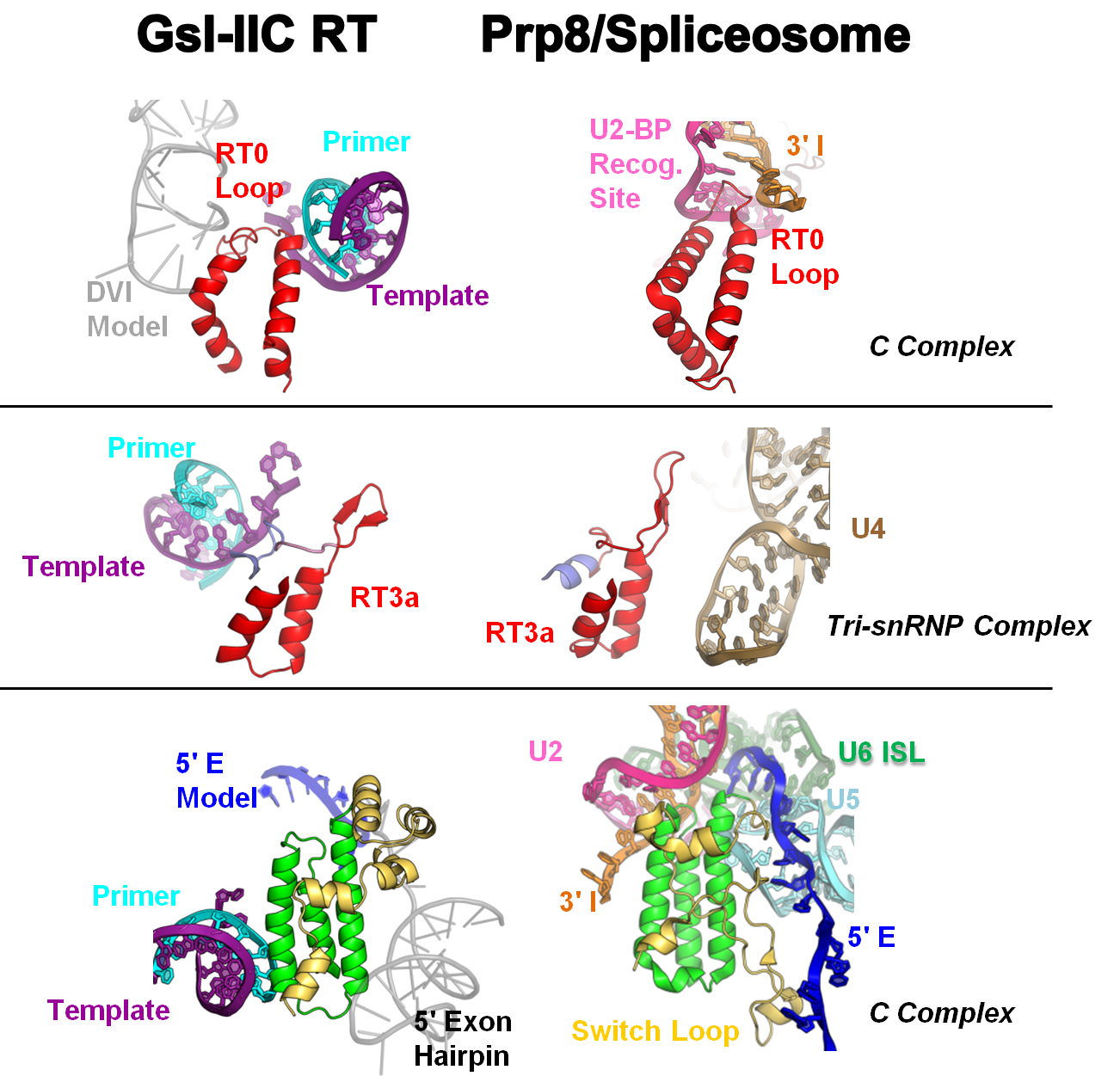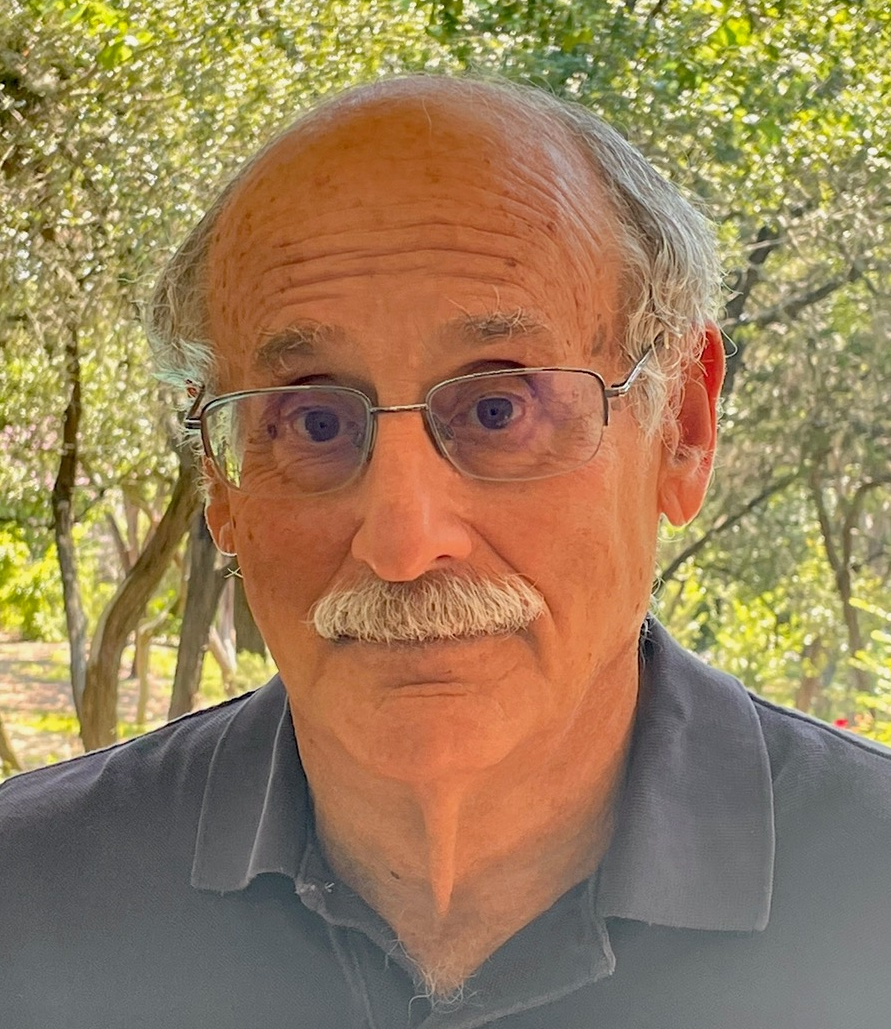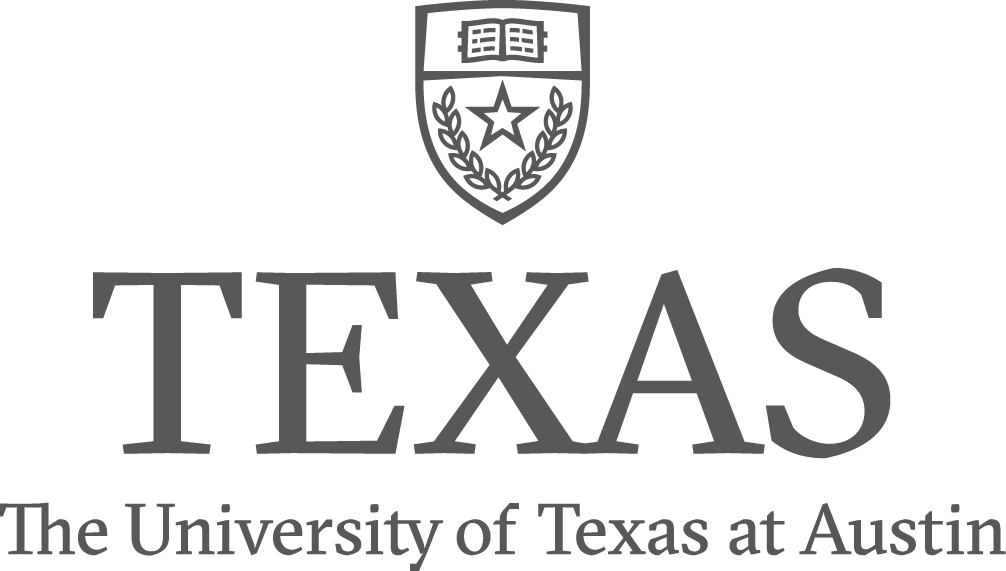Group II introns are autocatalyic, self-splicing introns (“ribozymes”) that are found in bacteria and the mitochondrial and chloroplast DNAs of some eukaryotes and are evolutionary ancestors of spliceosomal introns and the spliceosome in higher organisms. Thus, studies of group II introns can provide insight into the origin of introns and the evolution of splicing mechanisms in higher organisms. Remarkably, some group II introns are mobile genetic elements, suggesting how introns originated and spread in eukaryotic nuclear genomes. We found that such mobile group II introns encode proteins that are reverse transcriptases (RTs) and can insert site-specifically into new DNA sites by using a novel mechanism (“retrohoming”) in which the intron RNA inserts directly into the DNA site and is reverse transcribed by the intron-encoded protein, yielding an intron cDNA is integrated into the genome by host cell DNA recombination and repair enzymes. In practical applications of this work, we developed mobile group II introns into RNA-guided gene targeting vectors (“targetrons”) and used them as a source of novel RTs with desirable properties for RNA-seq and other biotechnological applications.

Selected Publications:
Stamos J, Lentzsch AM, Lambowitz AM. Structure of a Thermostable Group II Intron Reverse Transcriptase with Template-Primer and Its Functional and Evolutionary Implications. Molecular Cell [Internet]. 2017;68 :926–939.
Truong, D.M., Hewitt, F.C., Hanson, J.H., Cui, X., and Lambowitz, A.M. Retrohoming of a mobile group II intron into a chromosomal site in human cells suggests how eukaryotes limit group II intron proliferation. PLOS Genetics, 11(8):e1005422, 2015.
Yao, J., Truong, D.M., and Lambowitz, A.M. Genetic and biochemical assays reveal a key role for replication restart proteins in group II intron retrohoming. PLOS Genetics 9, e1003469, 2013.
White, T.B. and Lambowitz, A.M. The retrohoming of linear group II intron RNAs in Drosophila melanogaster occurs by both DNA ligase 4-dependent and -independent mechanisms. PLOS Genetics 8, e1002534, 2012.
Mohr, G., Ghanem, E., Lambowitz, A.M. Mechanisms used for genomic proliferation by thermophilic group II introns. PLoS Biology 8, e1000391, 2010.
Karberg, M., Guo, H., Zhong, J., Coon, R., Perutka, J., and Lambowitz, A.M. Group II introns as controllable gene targeting vectors for genetic manipulation of bacteria. Nature Biotech. 19, 1162-1167, 2001.
Guo, H., Karberg, M., Long, M., Jones, J.P. III, Sullenger, B., and Lambowitz, A.M. Group II introns designed to insert into therapeutically-relevant DNA target sites in human cells. Science 289, 452-457, 2000.
Saldanha, R., Chen, B., Wank, H., Matsuura, M., Edwards, J., and Lambowitz, A.M. RNA and protein catalysis in group II intron splicing and mobility reactions using purified components. Biochemistry 38, 9069-9083, 1999.
Yang, J., Zimmerly, S., Perlman, P.S., and Lambowitz, A.M. Efficient integration of an intron RNA into double-stranded DNA by reverse splicing. Nature, 381, 332-335, 1996.
Zimmerly, S., Guo, H., Perlman, P.S., and Lambowitz, A.M. Group II intron mobility occurs by target DNA-primed reverse transcription. Cell, 82, 545-554, 1995.
Zimmerly, S., Guo, H., Eskes, R., Yang, J., Perlman, P.S., and Lambowitz, A.M. A group II intron RNA is a catalytic component of a DNA endonuclease involved in intron mobility. Cell, 83, 529-538, 1995.


